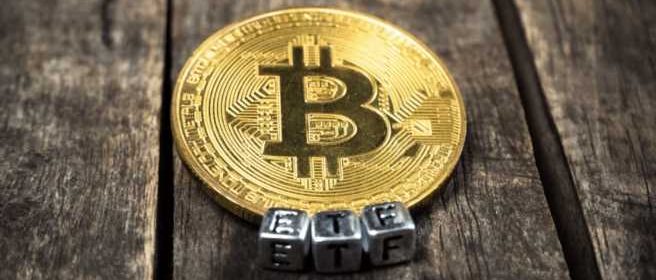Bitcoin ETF Launched: 3 Things You Must Know

After years of waiting, the Securities and Exchange Commission (SEC) finally approved the first Bitcoin futures exchange-traded fund (ETF) to list on the US stock exchange. The listing also turned out to be hit as investors demand poured in quickly.
But, What Is a Bitcoin ETF? And, What Are the Difference Between Spot and Futures ETFs?
A Bitcoin ETF is an investment vehicle that tracks the price of Bitcoin, generally the standardized benchmarked price. As the name suggests, Bitcoin spot ETF tracks the price of Bitcoin in the spot market, whereas a Bitcoin futures ETF tracks the price of rolling over Bitcoin futures contracts.
While the price of a Bitcoin spot ETF remains closer to the spot price on crypto exchanges, Bitcoin futures ETFs might be trading at a discount or a premium price, depending on the demand for the underlying Bitcoin futures instrument.
However, both of them are listed on mainstream stock exchanges, thus bringing crypto investment products closer to regular investors. These ETFs give exposure to Bitcoin, but the investor does not hold any of the cryptos.
“The primary function of ETFs to-date has been to provide exposure to an asset class by tracking a basket of investments with a common connection, e.g. oil, biotech, gold, or natural gas,” John Manzi, CEO at Beyond explained. “There are also stock index ETFs which track broader markets, like the S&P 500.”
Why Bitcoin Futures ETF?
The SEC has rejected multiple applications for Bitcoin spot ETF over the years. But, the agency’s inclination towards futures-based Bitcoin ETFs was revealed as its Chief Gary Gensler hinted at favoring them after he bashed crypto, calling the market a ‘wild west’.
ProShares’ ETF, which is now listed on the NYSE Arca, is tracking the Bitcoin futures price of CME-traded Bitcoin futures. It filed its application under the robust laws of the Investment Company Act of 1940 that have better investment protection.
Additionally, spot Bitcoin trading in the United States is not regulated at a federal level. However, the Commodity Futures Trading Commission directly oversees Bitcoin and Ethereum futures trading, labeling them as commodities.
“BITO (ProShare’s futures Bitcoin ETF) tracks bitcoin futures contracts not bitcoin’s spot price, so BITO does not trade in lockstep with bitcoin. So you are getting artificial exposure to bitcoin,” said Stan Sater, Business and Technology Attorney at Founders Legal.
“A futures ETF was probably accepted before a spot market ETF because we’ve had a few years now with the CME futures market subject to the CFTC’s oversight so the clearinghouse mechanisms are in place and any perceived manipulation of the futures market is less than the perceived manipulation of the underlying bitcoin spot market.”
ProShare’s Bitcoin ETF is only allowing traders to take long positions on Bitcoin futures, but a few other companies are seeking permission for inverse instruments that will allow traders to short Bitcoin.
Demand for Spot Bitcoin ETF Remains High
Though the first Bitcoin futures ETF has been listed on the US stock exchange, more than a dozen of spot Bitcoin ETF applications are still pending approval.
The listing of ProShares’ ETF has prompted giants like Grayscale to seek Bitcoin ETF as well. The company applied to the SEC to convert its trust fund with an AUM of over 41 billion into a Bitcoin ETF.
Another argument that is gaining heat is the launch of a Bitcoin futures ETF, which might hamper the approval of a spot ETF. If Bitcoin futures ETF succeed to satisfy the market demand for Bitcoin investment, the SEC might argue that there is no need for a spot Bitcoin ETF anymore.
But, Bitcoin is not the only crypto company attempting to be listed on stock exchanges. Furthermore, the SEC has received a few applications for the launch of Ethereum ETFs.
“It is unlikely that we’ll see an Etherum ETF,” Sater said. However, many experts take the latest approval as a watershed moment and believe that the spot Bitcoin ETFs and even Ethereum ETFs will be approved by the US regulator eventually.
Source: Read Full Article
